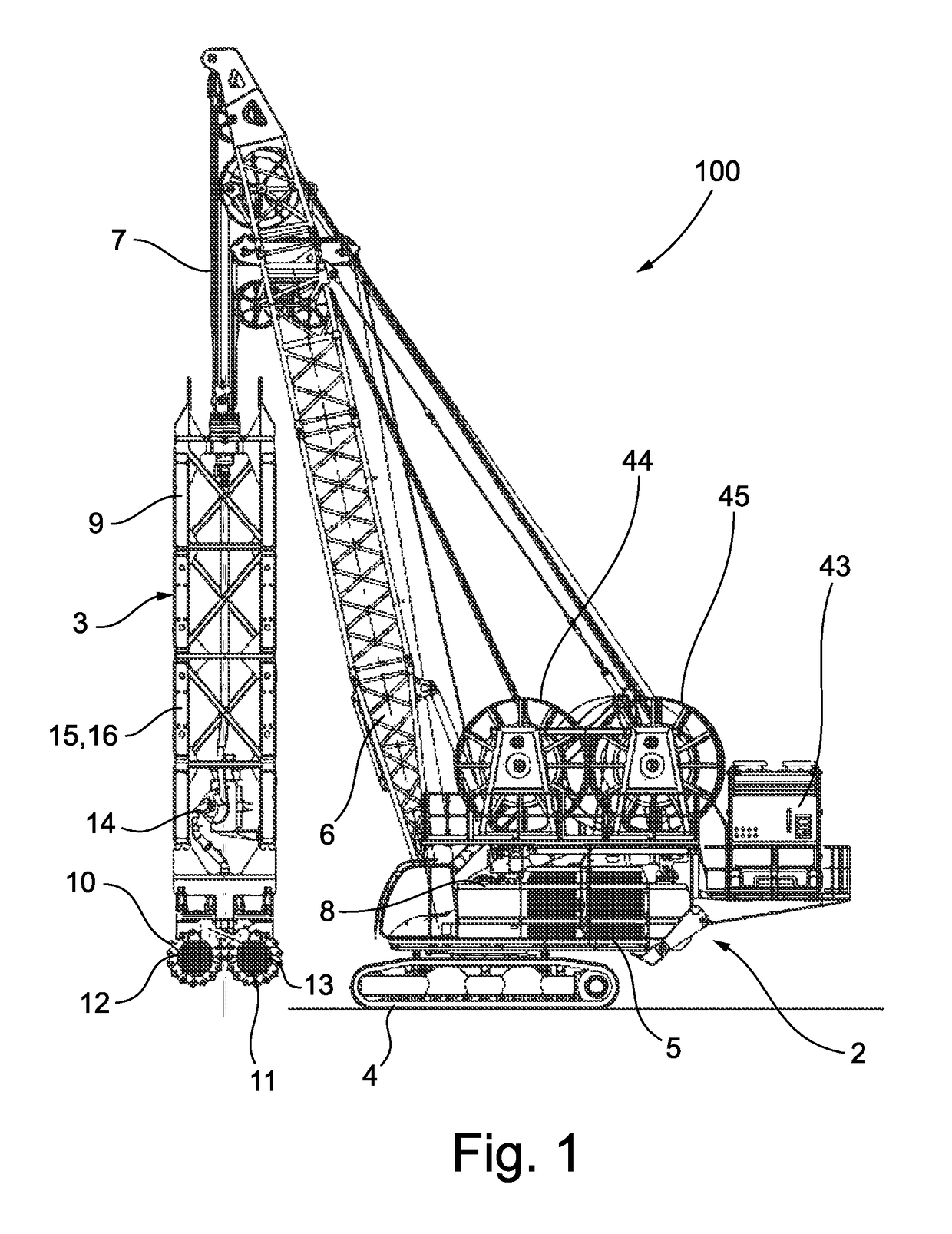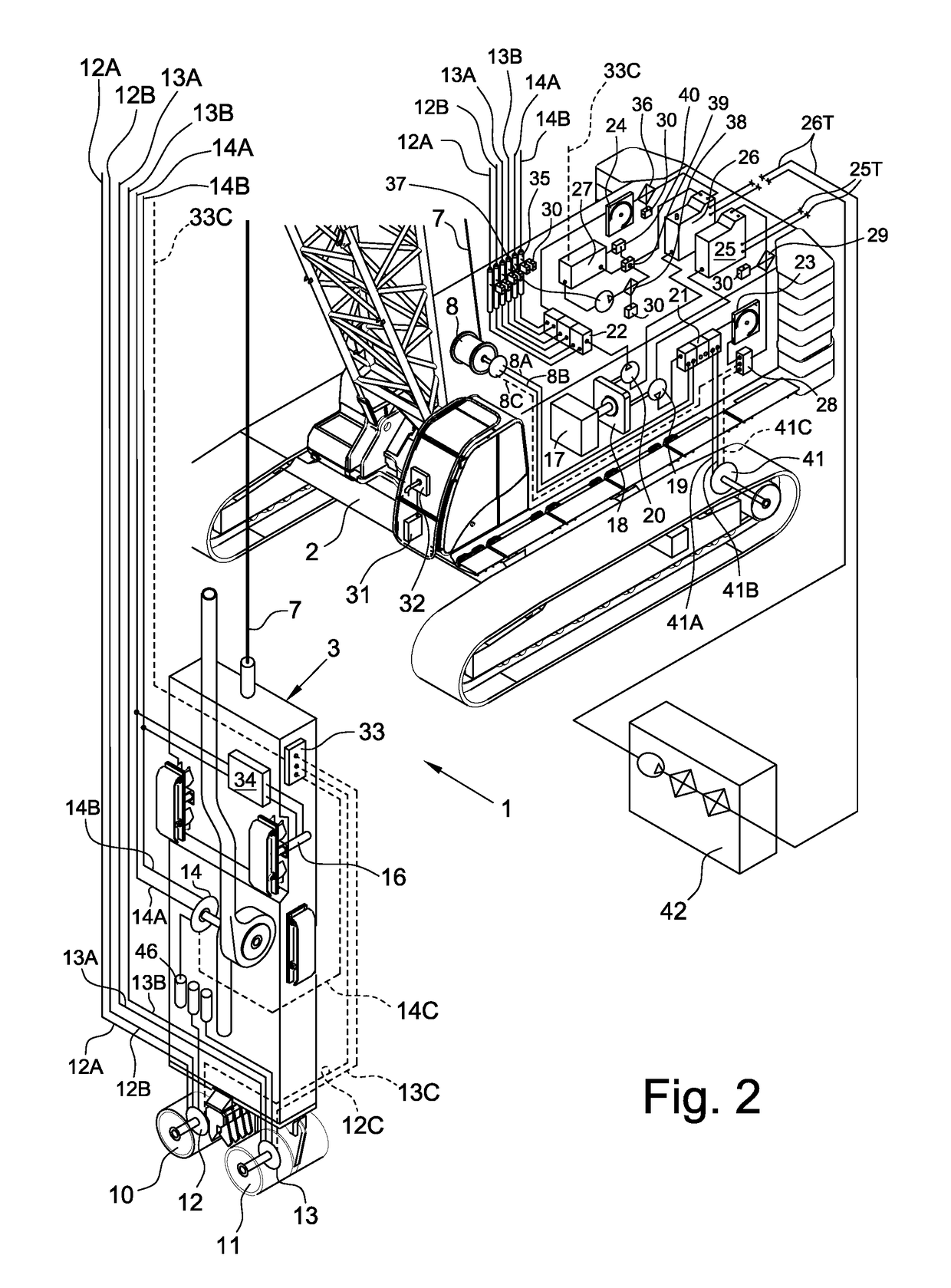Digging equipment with relative improved hydraulic system
a technology of hydraulic system and digging equipment, which is applied in mechanical machines/dredgers, excavation, soil preservation, etc., can solve the problems of series damage, hydraulic component breaking or seizure, and reducing the lubricant properties of oil, etc., and achieves the effect of simple, cost-effective and functional
- Summary
- Abstract
- Description
- Claims
- Application Information
AI Technical Summary
Benefits of technology
Problems solved by technology
Method used
Image
Examples
Embodiment Construction
[0026]With reference in particular to FIG. 2, it is specified that the details and the elements that are similar, or have an analogous function, to those of the known digging equipment described earlier and illustrated in FIG. 1 are indicated with the same reference numerals.
[0027]The digging equipment according to the present invention, wholly indicated with reference numeral 1, is made up of a base machine 2 and a crumbling or digging tool 3 operatively connected to the base machine 2. The base machine 2 comprises a tracked truck 4, a tower 5 rotating with respect to the tracked truck 4 and one arm 6, able to tilt and hinged to the tower 5, which supports the digging tool 3 through a suspending element 7 that is driven forwards by a winch. The suspending element 7 can be flexible, able to be directly wound or unwound through a winch 8. The winch 8 is installed on the base machine 2, inside or above the body, or fixed close to the winders 44 and 45, or furthermore directly connecte...
PUM
 Login to View More
Login to View More Abstract
Description
Claims
Application Information
 Login to View More
Login to View More - R&D
- Intellectual Property
- Life Sciences
- Materials
- Tech Scout
- Unparalleled Data Quality
- Higher Quality Content
- 60% Fewer Hallucinations
Browse by: Latest US Patents, China's latest patents, Technical Efficacy Thesaurus, Application Domain, Technology Topic, Popular Technical Reports.
© 2025 PatSnap. All rights reserved.Legal|Privacy policy|Modern Slavery Act Transparency Statement|Sitemap|About US| Contact US: help@patsnap.com



